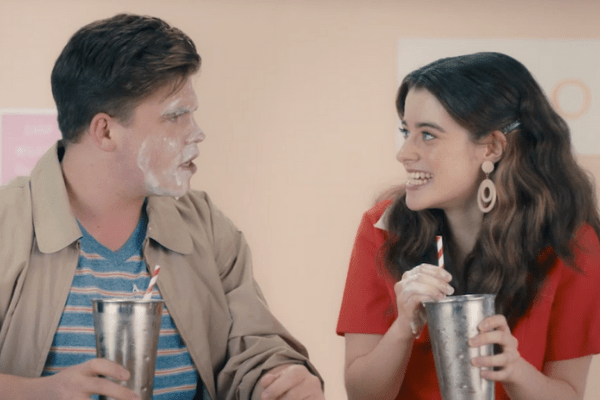If you haven’t watched the government’s new “educational consent video” pitched at high school students, prepare for a brain explosion of epic proportions.
Launched in line with the federal government’s The Good Society initiative — an offshoot of the Respect Matters program to support respectful relationships education in all Australian schools, the video reel depicts a young couple, sitting together in what can only be described as a 1960s diner, and chatting through elements of consent in a nonsensical, code language using bizarre milkshake euphemisms.
It’s like the ad was written by a daggy dad scared about the topic of sex, trying to be cool. It’s like the ad was written by Scott Morrison.
Here at Women’s Agenda, we’re not just scratching our heads, we’re curled up in foetal position, wondering how they could get it so wrong.
So where do we start? The only place possible right now, is with a listicle. There are too many fundamental issues going wrong with this campaign to name, so below we’ve made a start.
And by all means, go and watch the video yourself and let us know what you think.
Minimising the experience of rape trauma
In the video, a young woman obnoxiously and inexplicably smothers her boyfriend’s face with her milkshake after he says he doesn’t want her drink. “This is what we call moving the line,” the wise (male) narrator says. “When a person imposes their will on you, it’s as if they were moving the Yes line over the Maybe Zone or the End Zone, ignoring your rich inner world and violating your individual freedoms and rights.”
Later, “should we have pizza for dinner?” is used as another metric to represent crossing the line of physical intimacy in a relationship.
These examples are not only patronising, they minimise the gravity of sexual misconduct; treating the issue in a reductionist manner and undermining the lasting trauma and impact this behaviour has on its victims.
Sidelining characters of colour
In the video, a young man is employed as the ’sage’, supportive character — he is also the only person of colour with a speaking role in the campaign.
When the young woman in the video is forced to confront her ‘bad’ behaviour, she turns to him (in the transcript, he is called “the observing guy”) and asks “Oscar, am I a bad person?”
“Uh, Veronica, I think you should talk to a professional,” he says.
People of colour are also used as ‘background’ props.
Treating young people like idiots
The video describes consent as ‘moving the line’; “ — a safe space region where both parties feel comfortable and safe in the way they treat each other. “In a free and equal relationship, whoever moves the line is breaking the rules,” the narrator says.
“They don’t get to say how you feel. You have every right to be as upset as you like.”
It feels like watching an educational video for toddlers about sharing. The script is simple and one-dimensional — it completely misses the complex nature of intimacy and consent and fails to recognise that young people are some of the most engaged people in society about these issues.
Distorting reality- making men the victims and women perpetrators
It’s hard to pinpoint why this video would reframe typical reality by casting the female protagonist as the perpetrator in an abusive relationship (abuse by milkshake) and the young man a victim. Did the agency which produced this, or indeed the government, feel this would be the only way to make young men receptive to the messaging? Did they think it was necessary to paint this as an “un-gendered issue” when it so patently is? It’s hard to say.
What we do know is that this entire train-wreck of a video makes for uncomfortable viewing as a female. Not only because the whole thing is confusing, condescending and cringe-worthy, but because as we watch that milkshake, we’re thinking “if only a milkshake in our face spelled the worst of it.”


